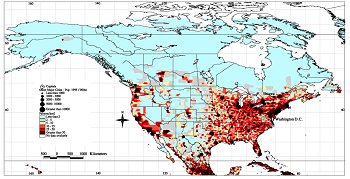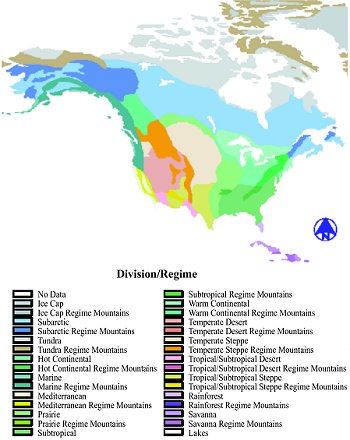|
8.1. Regional Characterization
North America, for the purposes of this regional assessment, is defined as
continental North America north of the border between the United States and
Mexico and south of the Arctic Circle. Comprising most of Canada and the United
States, this area totals approximately 19.42 million km2, with a
combined population of approximately 292.7 million in 1995 (Annex
D, Table D-6). Canada is the second-largest country
in the world but one of the most sparsely populated, with nearly 90% of the
population located along the border with the United States (Figures
8-1 and 8-2). The United States is the world's
fourth-largest country in both area and population. Approximately 75% of the
North American population is urban. North America is geologically and ecologically
diverse and spans a full spectrum of land cover types and physiography (Figure
8-3 and Annex C). About 12% of the land area of the
North American region is cropland, and 32% is forest and woodlands; the rest
is divided among rangelands and other lands, including mountains, desert, wetlands
and lakes, and wilderness. As such, management of croplands, forests, and rangelands
within North America is a key part of sustainable development.
 |
| Figure 8-1: The North America region [compiled by the World Bank
Environment Department Geographic Information System (GIS) Unit]. |
 |
| Figure 8-2: North American population density [compiled by the
World Bank Environment Department Geographic Information System (GIS) Unit]. |
 |
| Figure 8-3: Ecoregions for North America (courtesy of R.A. Washington-Allen/ORNL),
based on data provided by the National Geophysical Data Center). |
(continues on next page...)
|